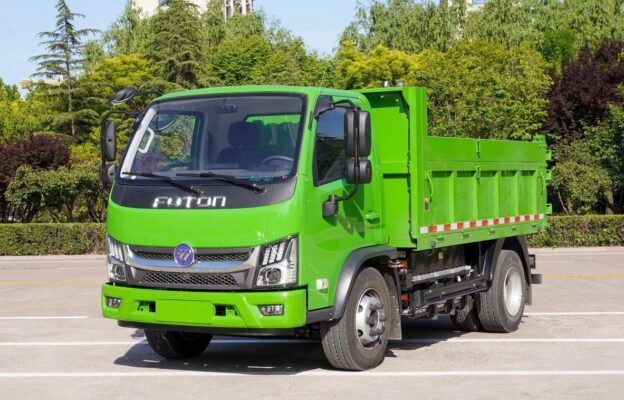Знания об электрогрузовиках
Why Do Electric Vehicles Depreciate So Quickly?
Электромобильс (электромобили) have become a symbol of innovation and sustainability, attracting significant attention from consumers and manufacturers alike. Однако, one notable challenge with EVs is their steep depreciation rate compared to traditional gasoline-powered cars. Several factors contribute to this rapid loss in value, including technological advancements, battery degradation, charging infrastructure limitations, and market dynamics. В этой статье, we explore these factors in depth to better understand why EVs depreciate so quickly and what it means for consumers and the industry.
1. Rapid Technological Advancements
The EV industry is evolving at an unprecedented pace. Manufacturers are constantly introducing new models with better features, improved battery performance, and longer ranges. These advancements render older models less appealing, even if they are only a few years old. Например:
- Improved Range: New EVs often come with significantly improved driving ranges, making older models with shorter ranges seem outdated.
- Faster Charging: Advances in charging technology, such as faster charging speeds or compatibility with higher-powered chargers, make older EVs less convenient to own.
- Enhanced Features: Newer EVs are often equipped with state-of-the-art technologies, such as advanced driver-assistance systems (АДАС), larger infotainment screens, or better connectivity features, which make older models feel obsolete.
This rapid pace of innovation creates a “tech lifecycle” for EVs similar to that of smartphones, where older models quickly lose value as newer, more advanced versions enter the market.
2. Battery Degradation and Limited Lifespan
The battery is one of the most critical and expensive components of an электромобиль, but it is also subject to wear and tear over time. Lithium-ion batteries, which power most EVs, gradually lose their ability to hold a charge as they age. This phenomenon, known as battery degradation, has a significant impact on the resale value of an EV:
- Reduced Range: As the battery degrades, the vehicle’s driving range decreases, making it less appealing to potential buyers.
- Replacement Costs: Replacing an EV battery can be extremely costly, often representing a significant portion of the vehicle’s overall value. Buyers in the used market may discount prices to account for the potential need for battery replacement.
- Perceived Uncertainty: Even if a used EV’s battery still performs adequately, potential buyers may perceive it as a risk, further driving down resale values.
While manufacturers offer warranties to cover battery performance for a certain period, the prospect of reduced performance beyond this warranty window can significantly impact an EV’s long-term value.
3. Limited Charging Infrastructure
The convenience and availability of charging infrastructure play a crucial role in the desirability of электромобильс. In many regions, charging networks are still underdeveloped, with limited access to fast chargers or charging stations in general. This has a direct effect on the value of used EVs:
- Buyer Hesitation: Potential buyers may be hesitant to purchase a used EV if they perceive that charging it will be inconvenient or time-consuming.
- Regional Disparities: In areas where charging infrastructure is sparse, EVs tend to depreciate faster as they are less practical for daily use.
- Compatibility Issues: Older EV models may not be compatible with newer charging technologies or standards, further reducing their appeal in the second-hand market.
While charging infrastructure is expanding globally, its uneven availability continues to affect the resale value of EVs, particularly in less urbanized areas.
4. High Initial Purchase Prices
Electric vehicles often come with a higher upfront cost compared to their internal combustion engine (ЛЕД) коллеги, primarily due to the cost of the battery. Однако, this higher initial price does not always translate into higher resale value. In fact, the premium price of new EVs accelerates their depreciation because:
- Lower Cost of New Models: As battery production scales up and technology becomes more affordable, the prices of new EVs are steadily decreasing. This reduces the perceived value of older models, even if they are still in good condition.
- Consumer Incentives: Many governments offer incentives, such as tax credits or rebates, to encourage EV adoption. While these incentives make new EVs more affordable, they can distort the resale market by making used EVs comparatively less attractive.
Например, a buyer may choose a new EV with a government rebate over a used one with similar features, further driving down the demand and price for used models.
5. Perception of Shorter Lifespan
Traditional gasoline-powered cars are often expected to last well over a decade with proper maintenance. In contrast, EVs are perceived as having a shorter lifespan due to concerns about battery degradation and technological obsolescence. This perception affects their resale value:
- Uncertainty About Longevity: Many consumers are unfamiliar with the long-term performance of EVs, leading to skepticism about their durability.
- Lack of Historical Data: Since EVs are relatively new, there is limited data on how they perform after 10-15 years of use, making buyers cautious about investing in older models.
- Limited Aftermarket Support: The repair and maintenance ecosystem for EVs is not as developed as that for traditional vehicles, further discouraging buyers from purchasing used models.
This perception, whether accurate or not, influences demand in the second-hand market and contributes to rapid depreciation.
6. Market Competition and Model Overlap
The increasing number of EV manufacturers and models entering the market has created intense competition. New entrants and frequent updates to existing lineups put downward pressure on the prices of older models:
- Frequent Model Updates: EV manufacturers often release updated versions of their vehicles every year, with improvements in range, features, and design. This makes older versions appear outdated and less desirable.
- Increased Supply of Used EVs: As more people adopt EVs, the number of used vehicles entering the market is growing, which can drive down prices due to oversupply.
This competitive market dynamic is particularly evident in popular EV segments, such as compact sedans and SUVs, where manufacturers continually strive to outdo one another in terms of range, features, and affordability.
7. Environmental and Technological Shifts
As governments worldwide tighten regulations on emissions and promote sustainability, EV technology is evolving rapidly. Innovations such as solid-state batteries, improved energy densities, and advanced charging systems are already on the horizon. These shifts create additional challenges for the resale market:
- Obsolescence of Older Technology: EVs equipped with older battery technologies or limited software capabilities may lose value quickly as newer, more advanced models enter the market.
- Environmental Policies: Incentives for newer, greener technologies may discourage buyers from investing in older EVs that lack the latest efficiency or sustainability features.
These trends highlight the fast-changing nature of the EV industry, where older models can quickly become outdated in the face of new advancements.
Заключение
The rapid depreciation of electric vehicles is the result of a complex interplay of factors, including fast-paced technological innovation, battery degradation, charging infrastructure limitations, high initial costs, and competitive market dynamics. While these challenges pose obstacles for the second-hand EV market, they also reflect the industry’s rapid growth and evolution.
For consumers, understanding these factors can help make informed decisions about purchasing and owning an EV. For manufacturers and policymakers, addressing these issues—such as improving battery longevity, expanding charging networks, and stabilizing resale markets—will be critical to ensuring the long-term success and sustainability of electric vehicles. As the industry matures, the depreciation rates of EVs are likely to stabilize, paving the way for greater consumer confidence and broader adoption.




